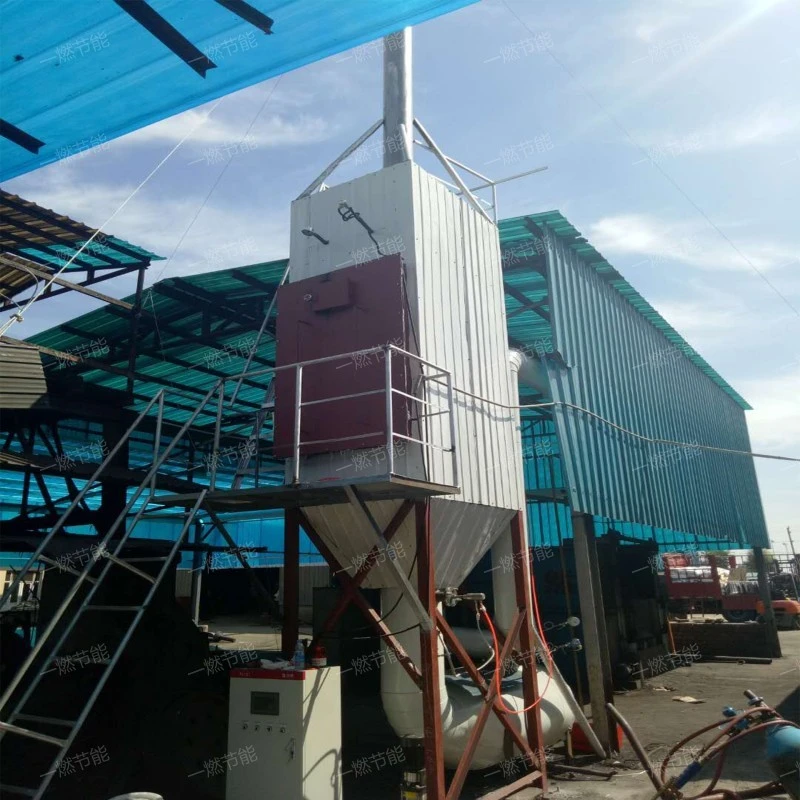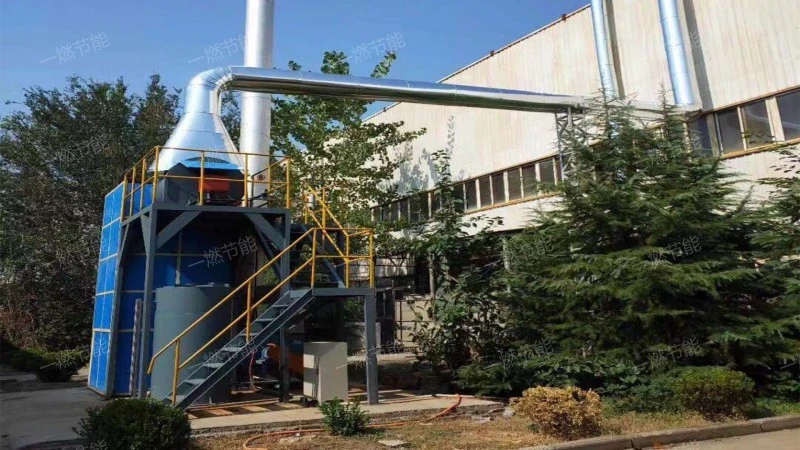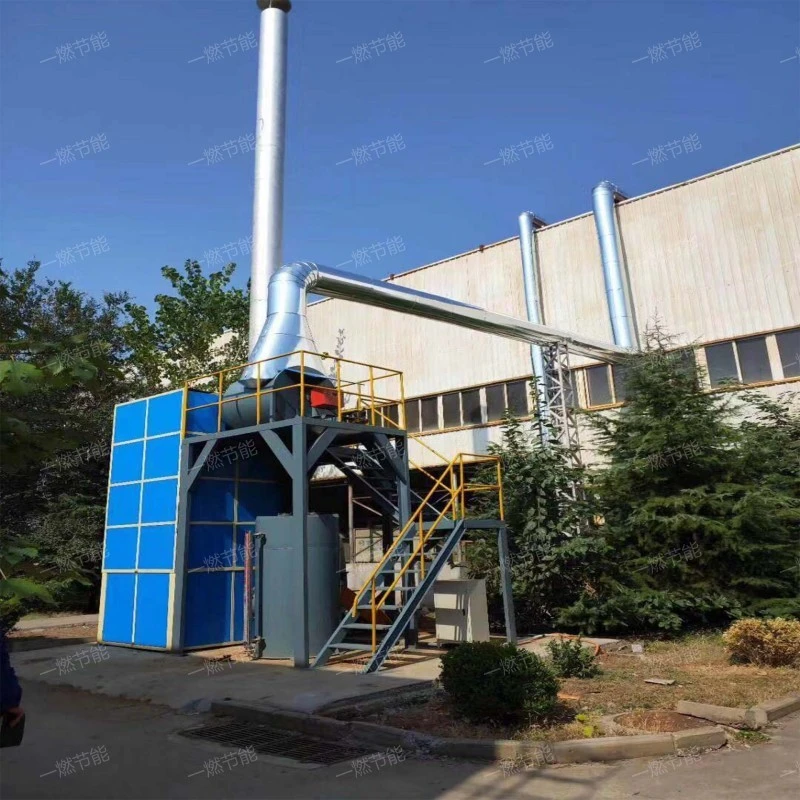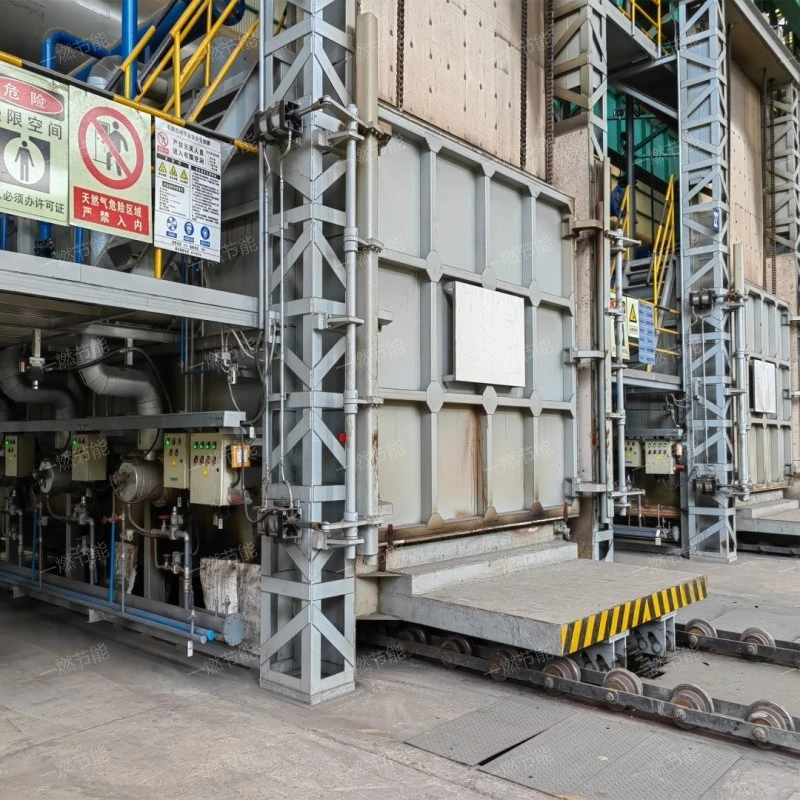What is a Denitrification of tail gas from roasting furnace? Introduction to the principle of SCR denitration system structure
Denitrification of tail gas from roasting furnaceit refers to the process of removing nitrogen oxides from flue gas to reduce environmental pollution. NOx is a pollutant harmful to the atmospheric environment, which has strong irritation and toxicity, and will lead to environmental problems such as acid rain and photochemical smog, and also endanger human health. The main principle of flue gas denitrification technology is to reduce NOx to nitrogen and water by adding appropriate reducing agent or catalyst in the combustion process or flue gas treatment system, so as to reduce NOx emission.,multifunctional, with functions such as Promote sustainable development, Improve working conditions, environmental protection, Improve energy efficiency and Promote sustainable development,the advantage is Intelligent control is gradually realized. By integrating advanced control system and sensor technology, the Denitrification of tail gas from roasting furnace can monitor the composition and emission concentration of flue gas in real time, and automatically adjust the injection amount of reductant and the active state of catalyst to ensure the stability and reliability of denitrification efficiency.、The initial investment of technology may be high, but in the long run, its economic feasibility is remarkable. The high-efficiency denitration ability of Denitrification of tail gas from roasting furnace technology can significantly reduce the environmental emission cost of enterprises and avoid fines and legal risks due to illegal emissions. In addition, Denitrification of tail gas from roasting furnace technology can also reduce operating costs and improve the economic benefits of enterprises by recycling heat energy.、The technology is suitable for many industries and processes, such as coal-fired power plants, iron and steel smelting, cement production and so on. These industries will produce a large number of NOx emissions in the production process, and the Denitrification of tail gas from roasting furnace technology can provide effective denitrification solutions for them. In addition, the gate technology can be adjusted and optimized according to different flue gas components and emission requirements to meet different denitration requirements.、Technology has been developed and applied for many years, and it is mature and stable. The Denitrification of tail gas from roasting furnace has high reliability and stability, and can maintain stable denitrification efficiency under various working conditions. In addition, the Denitrification of tail gas from roasting furnace technology has good adaptability and adjustability, and can be adjusted and optimized according to different flue gas components and emission requirements.、The by-products produced by the technology are mainly nitrogen and water vapor, which are harmless to the environment and will not cause secondary pollution. Compared with the traditional wet flue gas denitrification technology, the Denitrification of tail gas from roasting furnace technology does not need to use a lot of water resources and will not produce pollutants such as wastewater, which is more in line with the requirements of environmental protection and sustainable development.,is based on One-combustion energy saving is a Denitrification of tail gas from roasting furnace newly developed by One-combustion energy saving。
1、Brief introduction of Denitrification of tail gas from roasting furnace
Denitrification of tail gas from roasting furnacethat is, selective catalytic reduction technology is a technology used to reduce the emission of nitrogen oxides in flue gas.,the product looks atmospheric.,features include Stable operation, Stable operation, Less secondary pollution, Environment friendly and High denitration efficiency,is a Denitrification of tail gas from roasting furnace,at work,Catalysts are used to promote the selective catalytic reduction reaction between reducing agents (such as ammonia and urea) and NOx in flue gas. Under the action of catalyst, the reductant preferentially reacts with NOx to generate harmless nitrogen and water vapor, but hardly reacts with oxygen in flue gas. This chemical reaction is usually carried out in the temperature range of 200-450℃, and the specific reaction temperature depends on the type of catalyst selected.。

Denitrification of tail gas from roasting furnace
2、Denitrification of tail gas from roasting furnace performance advantage
Denitrification of tail gas from roasting furnaces have the following advantages.
- Intelligent control and convenience of operation
- economic viability
- Diversity and high efficiency of catalysts
- Wide applicability
- Environmental friendliness
The Denitrification of tail gas from roasting furnace has gradually realized intelligent control. By integrating advanced control system and sensor technology, the Denitrification of tail gas from roasting furnace can monitor the composition and emission concentration of flue gas in real time, and automatically adjust the injection amount of reductant and the active state of catalyst to ensure the stability and reliability of denitrification efficiency.
The initial investment of this technology may be high, but in the long run, its economic feasibility is remarkable. The high-efficiency denitration ability of Denitrification of tail gas from roasting furnace technology can significantly reduce the environmental emission cost of enterprises and avoid fines and legal risks due to illegal emissions. In addition, Denitrification of tail gas from roasting furnace technology can also reduce operating costs and improve the economic benefits of enterprises by recycling heat energy.
There are many kinds of catalysts used in the Denitrification of tail gas from roasting furnace technology, including vanadium-based catalysts and titanium-based catalysts, which can promote the chemical reaction between reductant and NOx at low temperature. At the same time, the active components and carrier materials of the catalyst are constantly being developed and improved to improve its catalytic efficiency and service life. This enables the Denitrification of tail gas from roasting furnace technology to maintain high efficiency of denitration in a wider temperature range and more complex flue gas conditions.
Denitrification of tail gas from roasting furnace technology is suitable for many industries and processes, such as coal-fired power plants, iron and steel smelting, cement production and so on. These industries will produce a large number of NOx emissions in the production process, and the Denitrification of tail gas from roasting furnace technology can provide effective denitrification solutions for them. In addition, the gate technology can be adjusted and optimized according to different flue gas components and emission requirements to meet different denitration requirements.
The by-products produced by Denitrification of tail gas from roasting furnace technology are mainly nitrogen and water vapor, which are harmless to the environment and will not cause secondary pollution. Compared with the traditional wet flue gas denitrification technology, the Denitrification of tail gas from roasting furnace technology does not need to use a lot of water resources and will not produce pollutants such as wastewater, which is more in line with the requirements of environmental protection and sustainable development.

Denitrification of tail gas from roasting furnace
3、Denitrification of tail gas from roasting furnace structure composition
The Denitrification of tail gas from roasting furnace structure is introduced as follows:
- Catalytic reduction reaction
- Temperature control and monitoring
- control system
- Reducing agent storage and supply system
- Flue gas mixing and distribution system
Under the action of catalyst, the reductant and NOx in flue gas undergo selective catalytic reduction reaction to generate nitrogen and water vapor.
The temperature in the catalyst reactor is maintained within the optimal reaction temperature range through the temperature control and monitoring system.
The whole Denitrification of tail gas from roasting furnace is automatically controlled to ensure the stable operation of the system and achieve the expected denitration effect.
Used to store and supply reducing agent (such as ammonia or urea solution) to the reactor.
The mixed reducing agent and flue gas are fully mixed in the mixing tube and evenly distributed to the catalyst reactor through the distribution system.

Denitrification of tail gas from roasting furnace
4、Introduction of Denitrification of tail gas from roasting furnace characteristics
Denitrification of tail gas from roasting furnace has the following characteristics
- selectivity
- Mature technology
- High denitration efficiency
- Mature technology
- energy saving and environmental protection
Under the action of catalyst, the reducing agent mainly reacts with NOx selectively, but less with other components (such as oxygen) in flue gas, thus reducing unnecessary consumption.
After years of development and application, Denitrification of tail gas from roasting furnace technology is very mature and has a wide application prospect.
The denitration efficiency of Denitrification of tail gas from roasting furnace technology can reach more than 90%, and it is a widely used post-combustion denitration technology at present.
After years of development and application, Denitrification of tail gas from roasting furnace technology is very mature and has a wide application prospect.
This technology can effectively reduce NOx emission in flue gas, reduce environmental pollution, and at the same time, it has stable operation and low energy consumption, which meets the requirements of energy saving and environmental protection.

Denitrification of tail gas from roasting furnace
5、Physical picture of Denitrification of tail gas from roasting furnace
Various specifications and models of Denitrification of tail gas from roasting furnace are displayed for our customers to visit.。

Denitrification of tail gas from roasting furnace
Note: All the pictures in this article were taken by One-combustion energy saving manufacturer.。
Denitrification of tail gas from roasting furnaceWidely used inFlue gas denitrification,Improve product quality,environmental protection,Meet the requirements of environmental protection,Promote sustainable development and so on,it refers to the process of removing nitrogen oxides from flue gas to reduce environmental pollution. NOx is a pollutant harmful to the atmospheric environment, which has strong irritation and toxicity, and will lead to environmental problems such as acid rain and photochemical smog, and also endanger human health. The main principle of flue gas denitrification technology is to reduce NOx to nitrogen and water by adding appropriate reducing agent or catalyst in the combustion process or flue gas treatment system, so as to reduce NOx emission.。
Related recommendation
-

What is a Heating furnace denitration equipment in forging plant? Introduction to the advantages and characteristics of the SCR denitration
2025-5-27 -

Introduction to SCR Low Temperature Denitrification System and SCR denitration structure principle
2025-5-27 -

Introduction to Roll type hot forming heating furnace and heating furnace structure principle
2025-5-27 -

What is a Multi functional chain annealing furnace? Introduction to the advantages and characteristics of Forging furnace functions
2025-5-27 -

回火炉
2023-03-26 -

Introduction to Resistance energy-saving industrial furnace and Trolley resistance furnace structure principle
2025-5-27 -

Introduction to Cylindrical tube heating furnace, Forging furnace advantages, characteristics and principles
2025-5-27 -

Introduction to Side in and side out forging furnace and Forging furnace structure principle
2025-5-27 -

What is a Automatic temperature control step advance and retreat furnace? forging furnace specifications, models, and parameters
2025-5-27 -

Introduction to Medium temperature deep well furnace and Forging furnace working principle
2025-5-27




